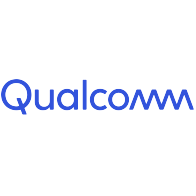Exploring the 6G Spectrum Landscape
An analysis of the spectrum potential for next-generation wireless systems.
Link to the GSA Member white paper: KeySight – Exploring the 6G Spectrum Landscape
In each generation of cellular communications, new spectrum has been key to delivering more services, more capacity, and higher data throughput to end users. 5G benefited from large contiguous bandwidths of millimeter-wave (mmWave) spectrum, known as frequency range 2 (FR2). And 5G benefited from the reallocation and unlocking of midband spectrum (3.4 to 4.9 GHz) with its more favorable propagation characteristics. The spectrum that will be available for 6G is unclear, but three frequency ranges are under discussion, including the upper midband (sometimes called midband or, unofficially, FR3) from 7 to 24 GHz and sub-terahertz bands from roughly 90 to 300 GHz. The third range involves maximizing spectrum below 7 GHz through refarming, new band allocation, and increased spectral efficiency.
Each of the proposed bands has benefits and drawbacks. The bands below 7 GHz provide the best coverage. But the spectrum in this range is already allocated, and getting access to additional spectrum requires moving incumbents somewhere else or refarming. Research into ways to increase spectral efficiency and make the most of what is available must continue. The bands between 7 and 24 GHz cannot provide the same coverage as those below 7 GHz. Still, this range is under significant research and is a useful and necessary candidate to expand capacity. The millimeter bands between 24 and 90 GHz provide high capacity and low latency for local deployments. 5G introduced these bands, but they remain underused. These bands may not make headlines related to 6G, but they will likely be a part of the final makeup and will help deliver services when very high capacity is necessary in dense urban areas. The sub-terahertz bands could meet extreme capacity needs in hyperlocal deployments. Figure 1 shows the relative bandwidth available in each of these areas. It is becoming clear that 7 to 24 GHz is the most popular target for new spectrum 6G deployments. While still of interest, the sub-terahertz bands are under scrutiny because of the challenges the industry faces with FR2. But they remain an option for the second phase or later rollouts.

